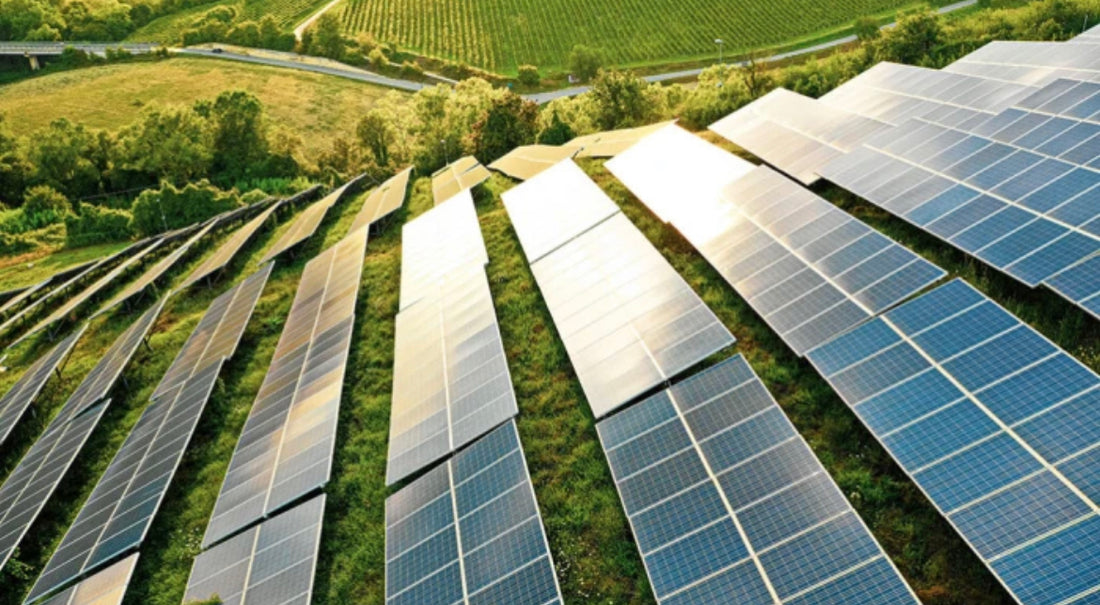It has been truly really disheartening to witness the loss of pristine country land all over the US as the global push for renewable energy intensifies and solar farms have emerge as a popular solution. The promise of clean, sustainable power is appealing. However, beneath the surface, there are significant drawbacks, especially when these farms encroach upon untouched rural landscapes.
Environmental Disruption
One of the most immediate and visible impacts of solar farms on rural land is environmental disruption. Pristine rural areas often boast rich biodiversity, featuring a variety of plant and animal species that thrive in undisturbed habitats. The construction of large-scale solar farms necessitates the clearing of vast tracts of land, leading to habitat destruction and loss of biodiversity. This disruption can have cascading effects on local ecosystems, potentially threatening endangered species and destabilizing environmental balance.
Aesthetic and Cultural Impact
Rural areas are often cherished for their natural beauty and cultural heritage. These landscapes, often depicted in literature and art, hold significant aesthetic and cultural value. The installation of solar panels, with their industrial appearance, can mar these scenic vistas, leading to a loss of cultural and historical significance. Communities that have maintained their way of life for generations may find their surroundings altered beyond recognition, affecting their quality of life.
Questionable Clean Energy Credentials
While solar energy is marketed as a clean alternative to fossil fuels, its environmental credentials are not without blemish. The production of solar panels involves mining for materials like silicon, silver, and rare earth elements. These mining processes are often environmentally destructive, causing soil erosion, water contamination, and loss of biodiversity. Moreover, the manufacturing process is energy-intensive and generates significant carbon emissions, offsetting some of the benefits of using solar energy.
Additionally, solar panels have a finite lifespan, typically around 25-30 years. Disposal of old panels poses a growing environmental challenge, as they contain hazardous materials that can leach into the soil and water if not properly managed. The recycling infrastructure for solar panels is still underdeveloped, leading to concerns about future waste management.
Economic Considerations
The economic impact of solar farms on rural communities is also a point of contention. While proponents argue that solar farms can bring jobs and revenue, these benefits are often overstated. The construction phase may create temporary jobs, but once operational, solar farms require minimal maintenance, leading to fewer long-term employment opportunities. Moreover, the revenue generated often flows to external investors rather than remaining within the local community, which may not see significant economic benefits.
Land Use Conflicts
As the demand for land to host solar farms increases, conflicts over land use become inevitable. Pristine rural land is often highly valued for agriculture, recreation, and conservation. The conversion of agricultural land to solar farms can threaten food security by reducing the amount of arable land available for farming. Similarly, the use of recreational and conservation land for energy production can diminish public access to natural spaces and undermine conservation efforts.
A Cleaner Alternative
A cleaner alternative to solar farms is rooftop solar installations. These systems utilize existing structures, reducing the need for land clearing and preserving natural landscapes. Additionally, they bring energy production closer to the point of consumption, minimizing transmission losses and enhancing overall efficiency.
The expansion of solar farms on pristine rural land raises critical questions about the true cost of this so-called clean energy. While the transition to renewable energy is essential to combat climate change, it is crucial to consider the broader environmental, cultural, and economic impacts. Policymakers and stakeholders must seek a balanced approach that prioritizes the preservation of natural landscapes and the well-being of rural communities while advancing sustainable energy solutions. Emphasizing rooftop solar installations, utilizing already developed land, and improving the recycling processes for solar panels are steps in the right direction. Sustainable energy must be truly sustainable, considering all facets of its impact.

